What is the Difference Between Wire-O and Spiral Binding?
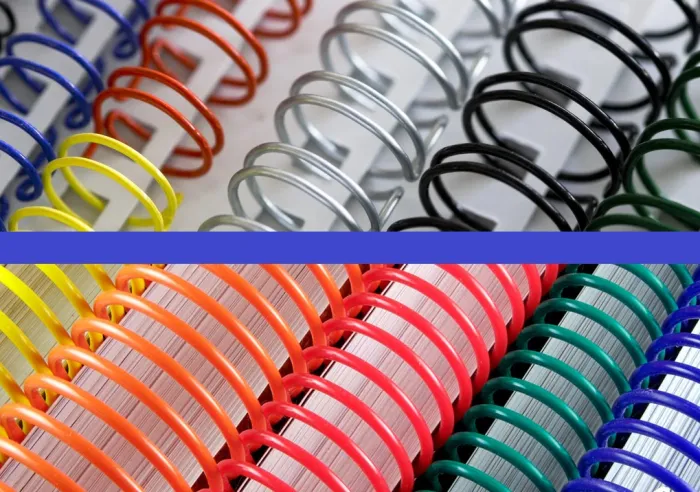
estimated reading time: 5 minutes
Wire-O Binding vs Spiral Binding
Wire-O Binding and Spiral Binding are popular methods for creating
books and booklets. Both are "punch and bind" methods, which means they use a preformed
spine element that is inserted through a series of holes punched along one edge
of a book's cover and pages.

Each method uses a spine that secures the cover and pages
together as a unit yet allows them to turn freely. In fact, the wire-o and
spiral binding methods allow books to open a full 360 degrees (cover to cover).
Both methods also allow books to lie flat and stay open
without having to manually hold the pages in place. This feature leaves the
hands free to perform other tasks, such as referencing a repair manual or following
a recipe in a cookbook.
Though there are some similarities between these two
methods, there are some differences in their construction, appearance, and cost.
Below is an overview of each method so you can compare and contrast these two
binding systems.
The Wire-O Binding Method
Wire-O Binding joins a book's pages and cover together using
a one-piece spine element that is made of rigid metal wire. In the open
position, this spine element resembles the letter "C". Once squeezed closed to
secure the cover and pages, the wire loops of the spine form "O" shapes,
hence the name Wire-O.
Because the spine is designed to appear as decorative pairs
of wire loops once it is installed, the Wire-O binding method is also referred
to as dual-loop, double-loop, or twin-loop binding.
Wire-O spines are available in a variety of colors as well
as metallic finishes like silver, gold, or copper. Also, Wire-O spines are
available with loop diameters ranging from 1/4" to 1-1/4". This size
range accommodates most book projects, from a minimum of two sheets of paper up
to a page stack measuring 1-1/8" in thickness.
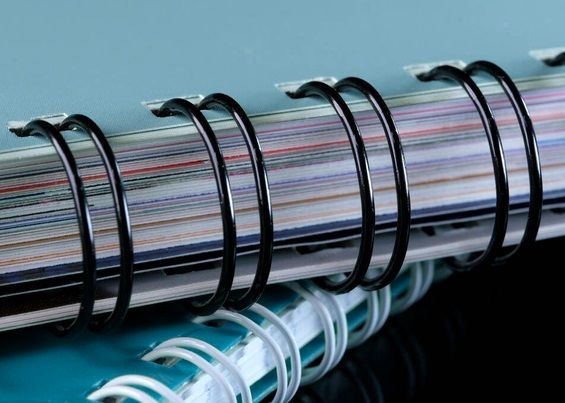
It is important to note that once a book has been bound with
the Wire-O method, it is difficult to add or remove pages. Attempting to manually
open and close the wire loops is not recommended because doing so can lead to distortion
and misalignment. This not only harms the clean appearance of the book, it can also
negatively affect the book's functionality. Hence, Wire-O binding is not really
suitable for book projects that require periodic page updates.
Even though Wire-O costs a little more than Spiral binding, it
remains a popular option because the dual metal loops add an air of
sophistication to bound documents. As such, books and booklets created with
this method exhibit a very polished and professional appearance.
The Spiral Binding Method
Spiral Binding uses a spring-like coil to bind a book's
pages and cover together. Because the spine element is shaped like a coil, Spiral
binding is commonly referred to as Coil binding. Though mass produced spiral bound
books often use a coil made of metal wire, the vast majority of custom printed
books use a coil made of PVC plastic.
To bind a book, the spiral coil is spun through the holes that
have been punched along one edge of the book's pages and cover. This allows the
pages and cover to rotate smoothly around the spine. Once fully inserted, each
end of the coil is crimped to secure it in place.
The plastic binding coils are available in a multitude of colors
to complement virtually any book project. Also, the flexibility of the plastic
coils resists bending and distortion, allowing the coils to maintain their original
shape and function. The plastic coils are also completely waterproof, making
spiral binding an excellent choice for books that might be used in wet or humid
conditions.
Like Wire-O spines, Spiral binding coils are available in a variety
of sizes. Spiral coil diameters range from 1/4" to 2". The 1/4"
spine can bind as few as two sheets of paper while the 2" spine can bind a paper
stack up to 1-3/4" thick.
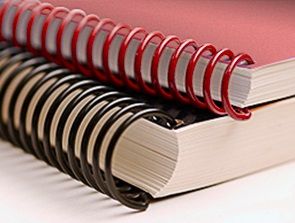
Spiral binding is a time-tested and readily available binding style. In addition, Spiral binding allows for pages to be added or removed by carefully un-crimping one end of the binding coil, unwinding the coil, and then reinstalling it once the page changes have been made. Having said that, it is important to keep in mind that the crimp can only be redone a few times before a replacement coil might be needed.
Compared to Wire-O binding, Spiral binding is a more
economical option. Also, books created with the spiral binding method have a
simpler and more casual appearance than books bound with Wire-O binding.
That said, the overall functionality of the books is
basically the same. Both binding styles allow books to open fully and lie perfectly
flat. In addition, both work well with index tabs and either spine type can be
installed on any edge of a book - side, top, or bottom.
Both Wire-O and Spiral are Practical Binding Options
Though Wire-O binding and Spiral binding differ in regard to
their construction, appearance, and cost, both offer a practical binding method
for a wide range of book projects. This includes manuals, workbooks, journals,
directories, travel guides, books of sheet music, multi-page wall calendars,
cookbooks, and any other type of bound documents that would benefit from the
convenience of easy referencing.
Color Vision wants to be your Book Printer!
If you are looking for book printing services, be sure to get in touch with Color Vision Printing.
We are a full-service
printer that specializes in book printing, including Wire-O and Spiral bound
books. We also offer other binding styles, including perfect binding, comb
binding, and saddle stitching.
Give us a call at 800-543-6299 to discuss your
book project. Or, if you are seeking a price quote, use our simple Quote
Request form to forward your specifications and we will email a custom quote
to you.
As always, we hope to hear from you soon and look forward to
assisting with your next book project!
Related Article: Perfect Binding vs Saddle Stitch
Related Articles
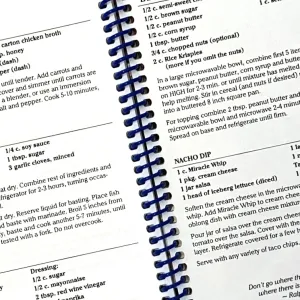
Which Book Projects Benefit From Being Spiral Bound?
Read This Article
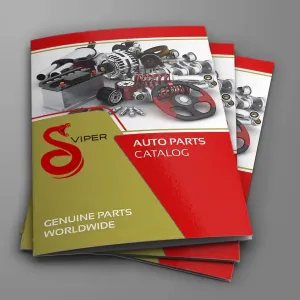
Booklet Catalogs: Why is this Catalog Format so Popular?
Read This Article
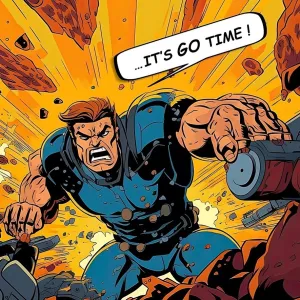
Creating a Comic Book? Here’s some Advice from a Printer
Read This Article

Perfect Binding vs PUR Binding: What is the Difference?
Read This Article